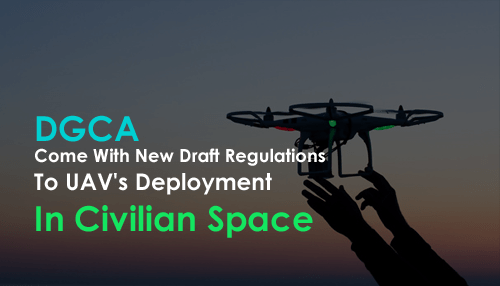The Director-General of Civil Aviation (DGCA) set up new draft regulations to UAV’s by civilians, also comprises commercial use of drones for the numerous applications such as Aerial photography, Agriculture or Goods delivery, etc, announced by the Civil Aviation Minister Ashok Gajapathi Raju on the first of this November.
The Unmanned Aerial Vehicles are categorized into five categories under new draft regulations as per their weight characteristics:
- Nano UAV: Up to 250 gm
- Micro UAV: 251 gm to 2 kg
- Mini UAV: 2 kg to 25 kg
- Small UAV: 25 kg to 150 kg
- Large UAV: >150 kg
Except for the UAVs, which fall under the category of Nano UAVs, will not require any type of registration. And the UAVs, which hold the weight above Nano UAVs, will require having Unique Identification Number (UIN) and Unmanned Aircraft Operator Permit (UAOP), by DGCA under the policies proposed by the ICAO (International Civil Aviation Organization), tagged by the Civil Aviation Secretary Rajiv Choubey.
The draft regulations also comprise that model aircraft, up to a maximum take-off weight of 2 kg flown below 200 feet inside an educational institute, will require neither a UIN nor a UAOP.
The statement added that Remote pilots operate the UAVs will require going through the requisite training, but the Nano and Micro categories UAVs operators got the exemption.
As per the draft guidelines, the no-fly zones comprise the area, within 5 km from an airport, within 50 km from the international border, beyond 500 meters into the sea along the coastline, within 5 km radius from Vijay Chowk in Delhi and from the mobile platform such as moving vehicles, ship or aircraft.
The persons would also not be permitted to operate over densely populated areas without prior approval and over areas affecting public safety or where emergency operations are underway, the statement added.



